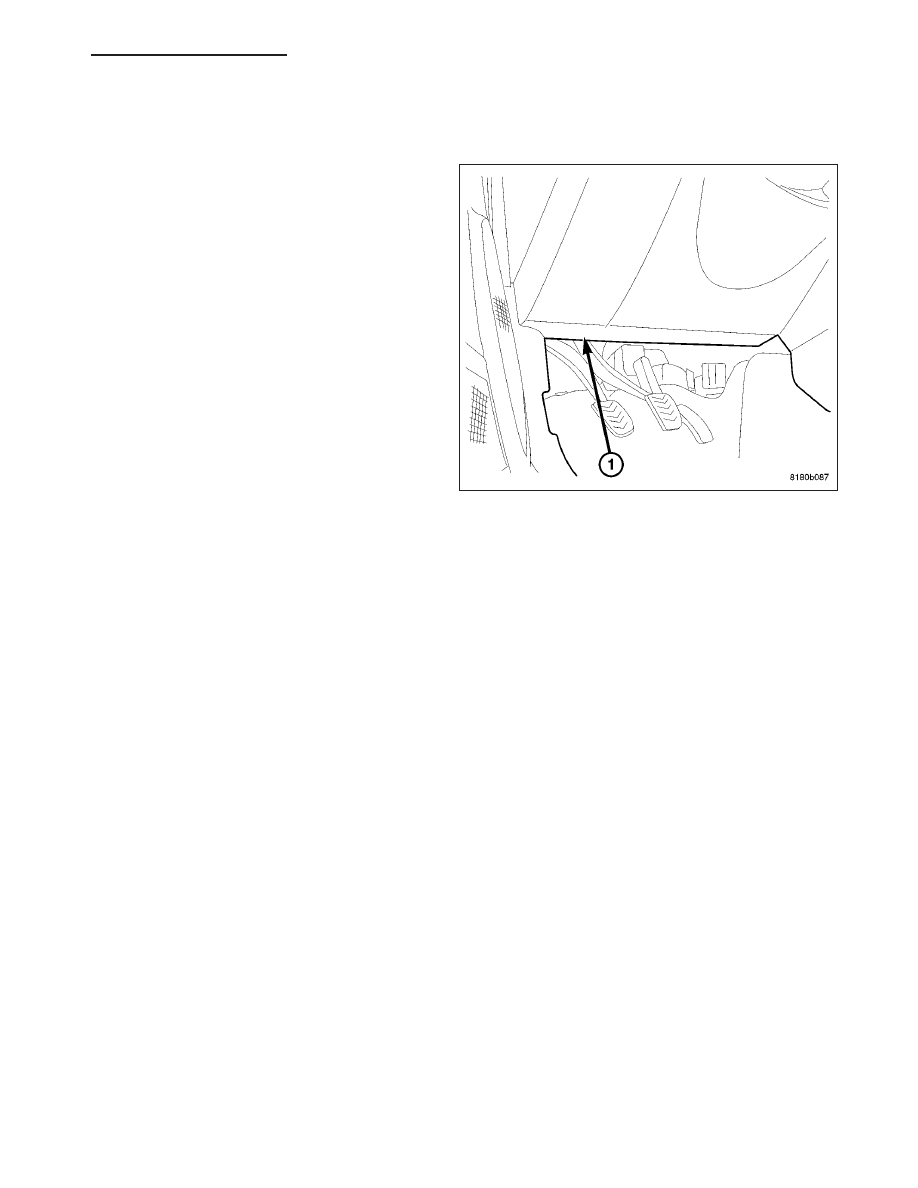Dodge Caliber. Manual - part 268

DATA LINK CONNECTOR
DESCRIPTION
The Data Link Connector (DLC) (1) is a 16-way
molded plastic connector that is part of the instrument
panel wire harness. This connector is located at the
lower edge of the instrument panel, outboard of the
steering column. The connector insulator is retained
by integral snap features within a rectangular cutout in
a mounting bracket integral to the lower instrument
panel and inboard of the inside hood release on the
inner cowl side trim.
OPERATION
The Data Link Connector (DLC) is an industry-standard 16-way connector that permits the connection of a diag-
nostic scan tool to the Controller Area Network (CAN) data bus for interfacing with, configuring, and retrieving Diag-
nostic Trouble Code (DTC) data from the electronic modules that reside on the data bus network of the vehicle.
PM
ELECTRONIC CONTROL MODULES - SERVICE INFORMATION
8E - 183